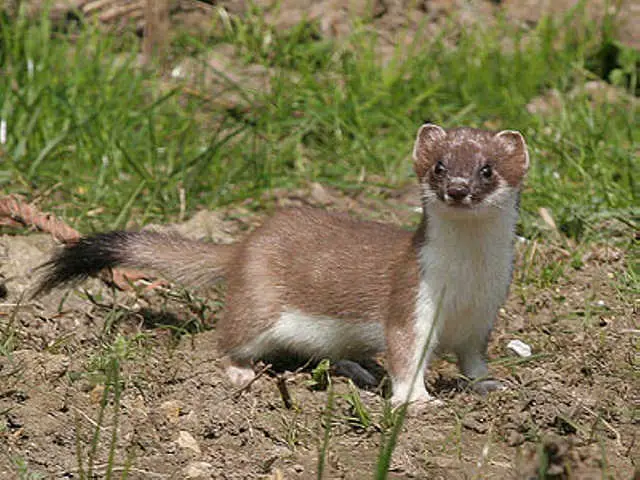Spotted Quoll
The Spotted Quoll, also known as the Spotted Tailed Quoll or Spotted Quoll is the second largest marsupial which is a carnivore.
The largest being the Tasmanian devil.
The Spotted Quoll is sometimes called the Tiger Cat.
Quolls are about the size of a domestic cat, and will range in color from red brown to orange brown to deep almost black brown. Each type of coloration bears white spots.

Spotted Quoll
Their abdomen is cream, yellowish white or white.
Each animal has a different pattern of spots on its body, with the spotted quoll the only one whose spots extend down over its tail.
It has a pale pink nose which, like cats remains damp. As well as a larger snout that can open to show a vast amount of very sharp teeth.
Males may weigh up to 15 pounds, while females are about half that.
In size as well as in weight, the female is a great deal smaller than the male of the species. Found primarily in Tasmania the quoll is also found sparsely along the mainland of Australia, in forested areas where there is a lot of ground cover for them.
They are solitary and nocturnal, living in burrows by day, or taking shelter in the holes in trees, or rotted logs. In the colder weather they will come above ground to sun bathe or forage during the daytime hours.
Quolls can move very rapidly through the forest and are extremely agile in the trees or on the ground.
Feeding on rats and mice, possums or other small animals the quoll is a hunter not a scavenger but at times can be both. They will eat carrion or scavenge from picnic areas.
The female mates at about 18 months and will produce several young at one time. They are born after only 21 days gestation.

Spotted Quoll
More than six are usually born. The first six top arrive at the pouch and attach themselves to the breast are the ones who are permitted to live, while any others are left outside.
They are born blind, deaf and hairless and will stay inside the pouch for about 2 months when they gain fur.
At this point they will then leave the pouch but nurse for another 6 or they live with the mother, learning how to hunt, to defend themselves and so on until about 6 months old when they become independent.
In the wild a spotted quoll can be expected to live about 7 years.Find out more about the Spotted Quoll over at Wikipedia »




These are just about the coolest things I’ve ever seen. I never heard of them before. I think I know a lot about animals but I never heard of this.
i’m doin a report any one got any good websites
im doin a report on the quoll but have no info on control of quoll
me and someone else are looking to buy one but we cant find a place online but we will keep looking but this website has helped alot
i saw thes on a tv show once, are there any other Quolls?